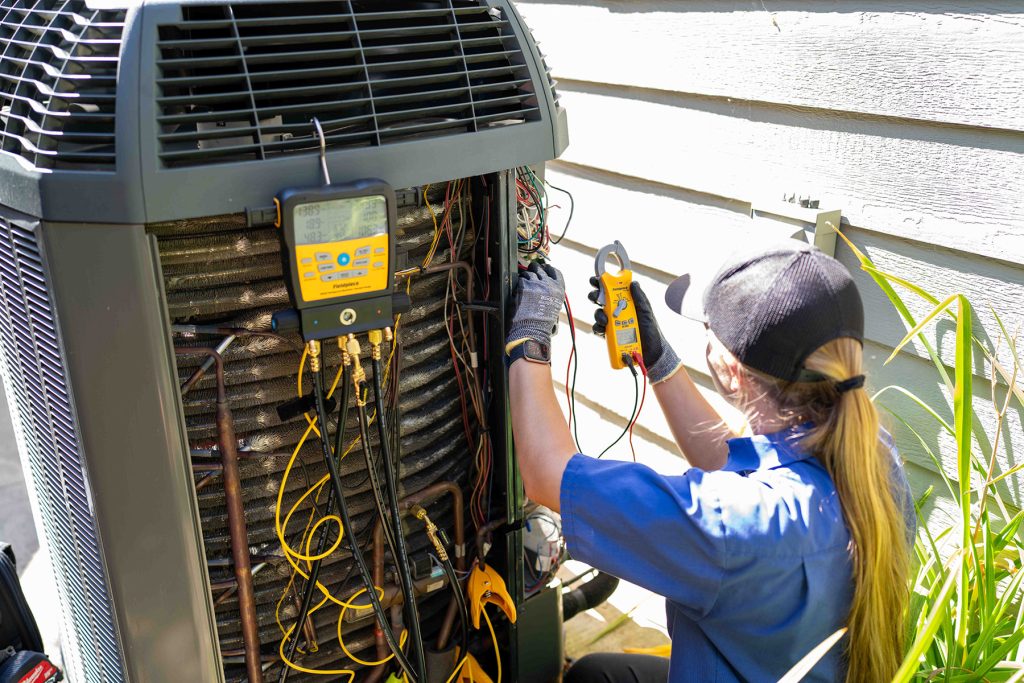There’s nothing more frustrating than switching on your air conditioner on a hot summer day, only to feel warm air coming from your vents. If you’re a homeowner in Springfield dealing with this issue, you’re not alone.
Several common problems can cause your AC to blow warm air, and while some are quick fixes, others may require professional attention to get your home cool and comfortable again. Let’s explore the typical culprits behind this cooling dilemma and how to know when it’s time to call in the pros.

1. Refrigerant Leaks: The #1 Cooling Killer
One of the most common causes of an AC blowing warm air is low refrigerant, usually due to a leak. Refrigerant is the chemical that cools the air inside your system. If there’s not enough of it circulating, your system can’t absorb heat properly, resulting in warm airflow. Signs of a refrigerant leak include:
- Hissing or bubbling noises
- Ice on the refrigerant line
- Increased humidity in your home
- Longer cooling cycles with little temperature change
Refrigerant leaks should only be handled by a licensed HVAC technician. Not only is it dangerous to attempt DIY repairs, but continuing to run your AC with low refrigerant can lead to costly compressor damage.
2. Clogged Air Filters: A Simple Fix with Big Impact
Dirty or clogged air filters can restrict airflow, making your AC less efficient or even causing the system to overheat and shut down. If your system is running but not cooling properly, check your filters first. If they’re coated in dust and debris, replacing them may be all it takes to restore comfort.
Springfield homes with pets, kids, or allergy concerns may need filter changes more frequently—about once a month during peak usage.
3. Thermostat Problems: Small Device, Big Consequences
Sometimes, the problem isn’t your AC at all, it’s your thermostat. A miscalibrated or malfunctioning thermostat might misread your home’s temperature or fail to signal your system to cool. Check to ensure:
- The thermostat is set to “cool” (not “fan” or “heat”).
- The temperature setting is lower than the current room temperature.
- The batteries (if applicable) aren’t dead.
If your system still won’t respond, you may need to have your thermostat inspected or upgraded.
4. Electrical or Circuit Issues
If part of your AC system—such as the outdoor condenser—loses power due to a tripped breaker, the indoor unit might still blow air, but it won’t be cooled. In this case, the fan may run while the cooling function doesn’t engage.
Check your breaker panel to see if anything has tripped. Resetting it may solve the problem. If it continues to trip, it’s time to call an HVAC technician to inspect for deeper electrical issues.
5. Dirty Coils or Blocked Condensers
Outdoor AC units work hard in the summer, and Springfield’s humid conditions can accelerate the buildup of dirt, leaves, or debris around the condenser unit. When the condenser coils are dirty, your system can’t release heat properly, leading to warm air indoors.
Keeping the area around your outdoor unit clean and scheduling routine maintenance can help avoid this issue and keep your system working at peak performance.
Your comfort is our business! Comfort Flow Heating serves all of Oregon, so contact our team today to schedule your appointment.
